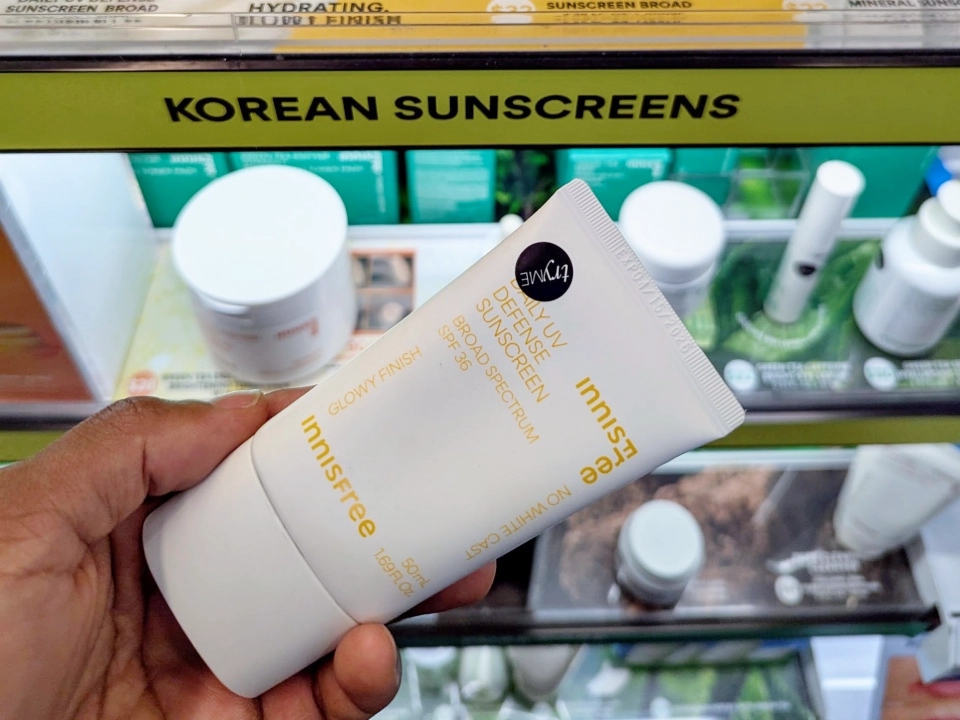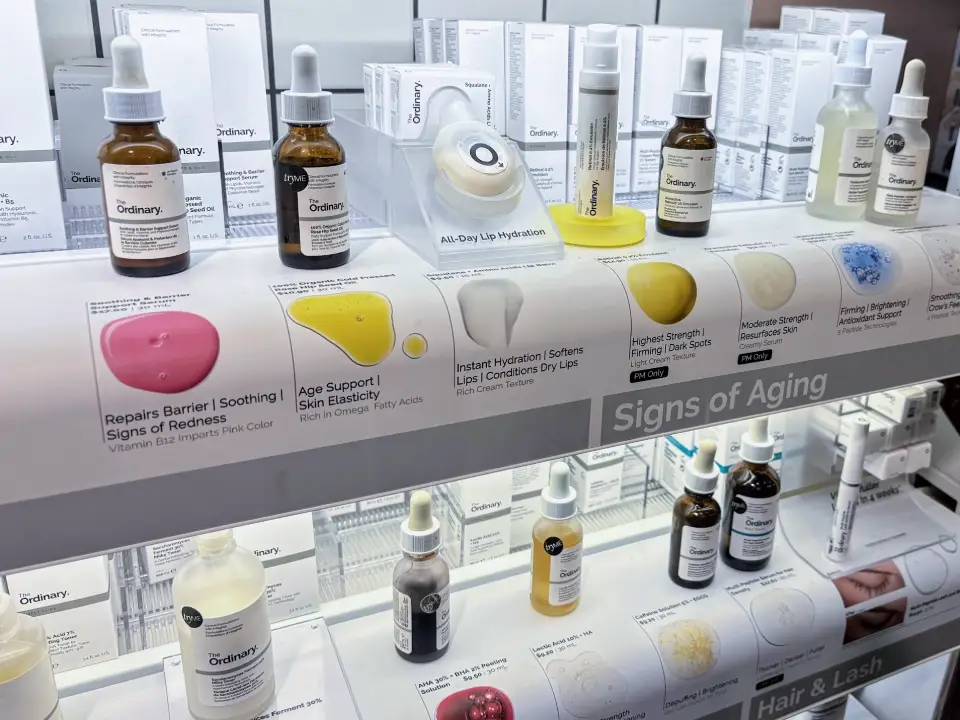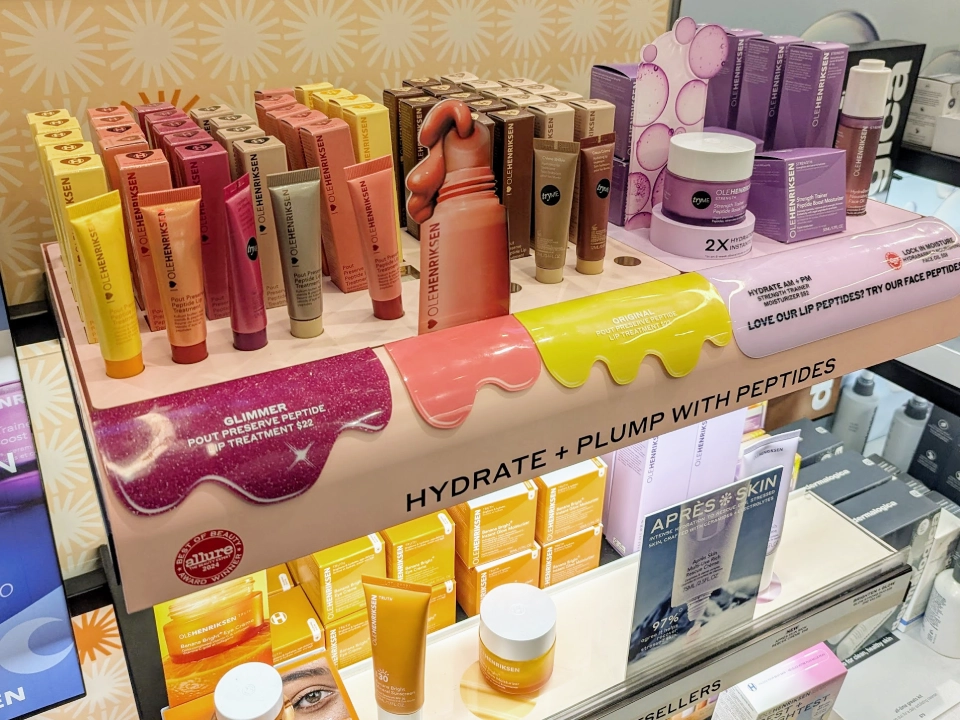Simple Skincare for Busy People
Plenty of skincare advice is too complicated or unrealistic. This post aims to cut through the noise by offering and explaining simple routines designed for people who want results without a high-maintenance lifestyle in terms of time, money, and effort.
Routine principles
These routines are optimized for three things: product availability, progression, and flexibility.
-
Product availability
All products are easy to find online or in stores—especially while traveling. Most have solid equivalents from other brands too. -
Progression
Start with the basics. Layer on stronger products for increased benefits when you’re ready. -
Flexibility
Skincare shouldn’t punish you for missing a few days every now and then. The best routine is a forgiving one you’ll actually follow—even inconsistently.
Easy wins
Before you even touch a product, some quick upgrades to your habits go a long way.
- Use a separate towel for your face. Wash it every week or two.
- Wash or change your pillowcase every week or two.
- After hot water exposure (like a shower), rinse your face with cold water to close your pores.
- Pat your face dry instead of rubbing it.
- Hands off! Avoid picking at pimples, zits, or blemishes.
- Shave with a single-blade razor (safety razors are great).
- Eat and hydrate well; proper nutrition does wonders for skin.
Daily cleansing routine
Cleansing and moisturizing daily keeps your skin clean and hydrated. Do this every morning and after sweating. At night, skip sunscreen but keep the rest.
What you’ll need
Gentle cleanser
Choose any non-foaming cleanser. It should feel like a light, odorless slime that’s easy to remove and doesn’t dry your face out too much.
- Cetaphil Daily Facial Cleanser
- CeraVe Hydrating Facial Cleanser
- up & up Daily Facial Cleanser (Target)
Silicone scrubber
Optional, but effective for mechanical exfoliation during regular face washes.
Moisturizer or lotion
Use a facial moisturizer with SPF or add sunscreen if you prefer. Fragrance-free body lotion with a simple ingredient list works fine otherwise.
- Aveeno SPF 30 Daily Face Moisturizer
- up & up Radiant Skin Lotion with SPF 15
- Amazon Basics Daily Oatmeal Lotion
Facial sunscreen
Lighter than body sunscreen with better blending, especially for darker skin tones. Opt for something oil-free to keep your face matte.
Note: both recommendations contain avobenzone, a known endocrine disruptor. The way suncreen is regulated in the US makes it difficult to find widely available and affordable options that optimize for healthy ingredients, good appearance and texture, and minimal environmental damage. Let me know if you have any good alternatives that satisfy those criteria.

Morning routine
- Cleanse face with water and a dime-sized dollop of cleanser.
- Optional: use silicone scrubber (15 seconds, circular motion).
- Rinse with cold water.
- Pat dry.
- Apply a pea-sized amount of moisturizer.
- If your lotion doesn’t contain SPF, follow with sunscreen.
Note: sunscreen helps minimize UV damage, but if it contains avobenzone or similar ingredients, that’s mutually exclusive with minimizing exposure to endocrine disruptors. A good measure is to check the UV index before going outside (I use my smart speaker) or think about how long I’ll be exposed to UV radiation and decide whether or not to apply sunscreen accordingly.
Post-workout or evening routine
- Repeat the above steps (skip SPF at night).
Facial masks
Daily cleansing and good habits can take you quite far and offer decent results for a starter skincare routine. Less frequent face masks are the next level that can be stacked on top for deeper exfoliation—use them anywhere from monthly down to weekly depending on your skin and preferences.
What you’ll need
- New York Biology Dead Sea Mud Mask
- Matcha or tea tree masks are also good options
Routine
- Wet face with water and apply mask
- Leave on for 10–15 minutes
- Rinse with cold water, pat dry
- Moisturize like usual
Note: mask solutions can also be used for spot treatment for breakouts, blemishes, or localized skin issues.
Anti-aging night cream
Night cream offers another level progression for a more complete skincare routine beyond just washing and moisturing your face daily and doing a monthly mask. Retinoids chemically accelerate skin exfoliation for anti-aging effects such as reduction of fine lines, wrinkles, and unevenness in skin tone to yield a smoother and more youthful appearance. Night creams that include retinoids are stronger products, so they come with some caveats. Stack this on top of daily moisturizing and face mask treatments when ready to commit to a more regular and slightly more demanding skincare routine.
What you’ll need
Retinol night cream
- Olay Retinol24 + Peptide
- Olay Retinol24 MAX (stronger)
Derma roller (optional)
Microneedling assists the skin’s absorption of topical products, stimulates collagen production, and can improve skin texture by reducing the prominence of scars, wrinkles, fine lines, and stretch marks.
Nighttime routine
- Cleanse your face (do not scrub; the cream will exfoliate)
- Optional: use derma roller to microneedle face lightly (only once per area)
- Apply a pea-sized amount of retinol cream
- Skip regular moisturizer on these nights
The next morning
Your morning routine becomes more important after using retinol at night. UV radiation causes retinol to break down which can have negative effects for your skin. This means two things: you should only ever use it at night and you should wash it off before the daylight touches your face the next morning.
- Cleanse face before sun exposure
- Use moisturizer as usual
- Do not skip SPF if braving UV exposure
Your skin may need a chance to adapt to retinol at first so graduate your usage by modulating frequency and consider starting with lower-concentration products. Start with 2 nights per week and work up to 3, spacing treatments out evenly across the week. It is normal to see some changes in your skin while adjusting—give it time and relative consistency.
Ready for more?
Full disclosure: this has been my personal stopping point for years. I can be fairly consistent with the above routines and am quite happy with the results. Some may want to explore further.
Here are some notes on more specialized ingredients and interventions to explore once the basics are dialed. These are based on cursory research, short-term product testing, and conversations with people who know more about skincare than I do.
- Alpha hydroxy acids (AHAs)
- Beta hydroxy acids (BHAs)
- Hyaluronic acid
- Peptides
- Eye creams or serums (for dark circles, etc.)
- Red light therapy


Skincare has pretty wild price extremes (see: the world’s most expensive skin creams). Don’t assume expensive always means better. Experiment slowly, take notes, and stick with what works. Remember that diminishing returns are real and that skincare should serve your life rather than consume it.
Update
I stopped using lotion on my face. I’m happier with a few milliliters of water-based multi-peptide serum with hyaluronic acid. It retains moisture well, but keeps skin matte and has a nice smoothing and firming effect to boot. It is also very economical to apply and easy to travel with.
I am also occasionally applying caffeinated eye cream to my lower eyelids in the morning to alleviate dark circles and puffiness. I’m thinking about a lightweight Gua Sha setup to aid further in this area; I’ve come to rather dislike the sensation of unexpressed facial lymph nodes.
There’s always a lot of new stuff going on to explore in this world!
I hope this gave you a clear path to healthier skin without the fluff. Message me on X (Twitter) if you want to talk routines, ask questions, or offer suggestions. Thanks for reading!